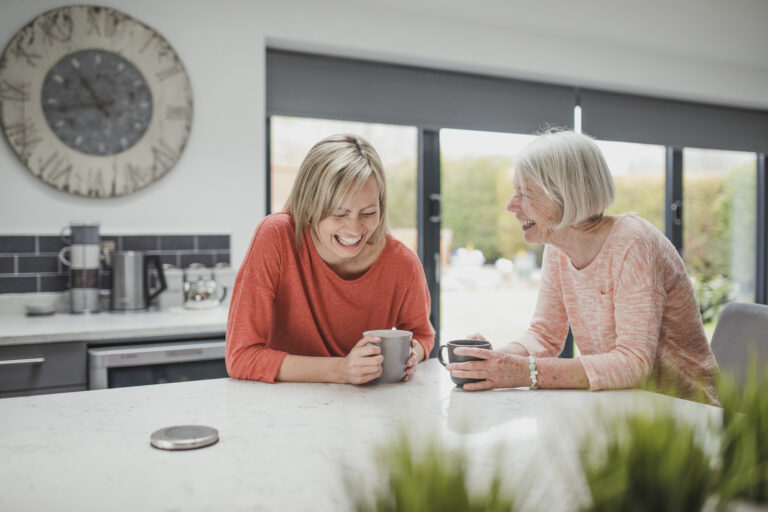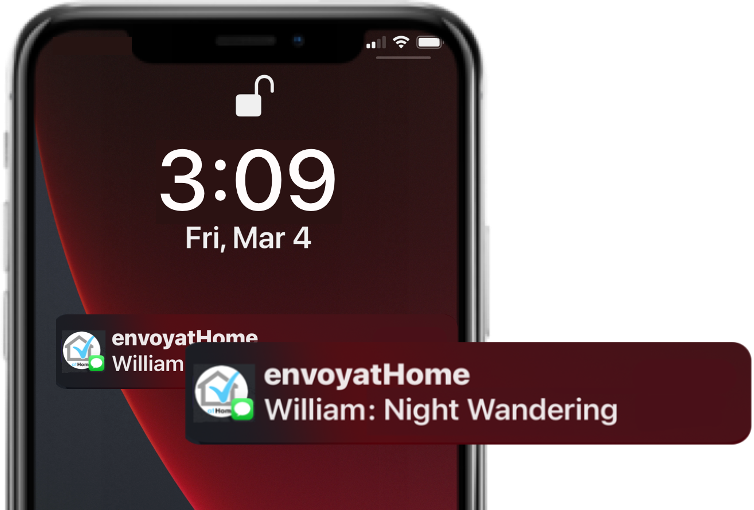Behavior is a Vital Sign
Imagine having visibility to a loved one’s daily life to discover early signs of health issues, memory decline, or even safety concerns—all without asking them a single question. That’s what behavior monitoring can do, and it’s especially useful for family caregivers of older adults who live alone.
When someone consistently fails to eat, has inconsistent sleep schedules or uses the bathroom more than usual, these small changes can be early signs of bigger problems. They might signal brewing health concerns, cognitive changes consistent with dementia, or even trouble following a doctor’s orders. But if no one is watching, these signs go unseen and untreated.
Behavior at home is more than just habits. It’s a window into health, safety, wellness, and independence. Older adults often can’t, or won’t speak up when something’s wrong. For older adults on a cognitive journey, they don’t even know anything is wrong. That’s why understanding their behavior at home—passively, with respect and privacy—is so powerful.
At envoyatHome, we’ve learned that behavior is a vital sign. It offers up signals about what’s happening beneath the surface. And just like other vital signs, tracking behavior can help caregivers and clinicians identify health concerns that would otherwise go untreated until they become acute.
The Difference Between Behavior Monitoring and Ordinary Monitoring
Not all passive remote monitors for seniors are created equal. Many products on the market work like a GPS. They can tell you where your loved one is, but not what they’re doing or whether it’s expected.
Let’s say your mom is in the bathroom. A basic monitor will say, “Mom is in the bathroom.” But that doesn’t help you if something’s wrong. Is she brushing her teeth? Or is she in distress and in need of immediate help?
Behavior monitoring understands context. Instead of just tracking location and movement, a more sophisticated monitor can differentiate situations of concern from simple deviations in routine.
Here’s another example. Most passive remote monitors for seniors can detect a door opening. But only a more advanced passive remote monitor for seniors can sense context and tell the difference between a routine door opening and an elopement attempt. What is elopement? Older adults with memory loss or diagnosed dementias will sometimes leave their home for a purpose that is not realistic, such as “going home” when they already ARE home or to visit a friend from their past – at any hour of the day or night. It’s important for a remote passive monitor for seniors to detect the difference between daily picking up the mail at the curb from an elopement attempt.
A behavior monitor understands, minimizing false alarms while keeping family caregivers informed and empowered.
Doctors Already Treat Behavior as a Vital Sign
When an older adult goes to the doctor, what’s the first thing they’re asked? Usually, it’s something like “What’s been going on at home?” or “Have you noticed any changes in your day-to-day life?” These questions are not small talk—they are data mining medical tools.
Doctors use these questions to uncover hidden signals pointing to changes in physical health, mental wellness, and whether treatments and medicines are working effectively. The doctor needs to know whether the patient is managing daily tasks, remembering to take their medication, or behaving differently, because their treatment decisions DEPEND ON IT.
This interview technique is the standard of care. The standard of care refers to the level and type of care that a reasonably competent and skilled health professional would provide under similar circumstances. It ensures that patients receive consistent, appropriate, and quality treatment based on current medical knowledge and practices.
What questions might an older adult be asked at a routine appointment? Here are some examples from the doctors at Summit Health.
Effectively implementing the standard of care depends on, however, the answers to these simple but critical questions. What happens when an older adult can’t self-report accurately because they forget, leave out critical details, or can’t explain what’s really going on at home? Or in some cases, purposely mislead their care provider because they’re afraid of losing their independence?
This is why it’s so important for family caregivers to use a passive remote monitor for seniors that employs sophisticated behavior monitoring. With the power of information gained from behavior monitoring, caregivers can step in to fill in the blanks between medical appointments and ultimately ensure their loved one gets better care.
And beyond clinical care, behavior monitoring supports what matters most to everyone—quality of life. Families want to make sure their loved ones are safe, comfortable, and thriving at home. Clinicians want to help patients maintain independence and reduce avoidable health issues. Patients want to live with dignity. These goals are shared. When we monitor behavior as a vital sign, we give families and doctors the ability to protect and promote well-being in a real, meaningful way.
Behavior is a Vital Sign for Caregivers Too
Doctors aren’t the only ones who need insight into what’s going on. Family caregivers make vital decisions every day, often without vital information.
When your loved one lives alone, every day brings questions:
-
Is she managing the stairs?
-
Did he get out of bed?
-
Is she eating?
-
Is he wandering or anxious?
-
Was that last phone conversation different because he’s getting forgetful, or does he have an undiagnosed UTI?



